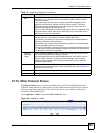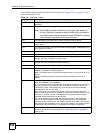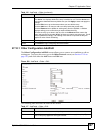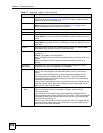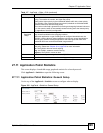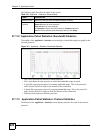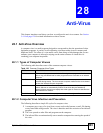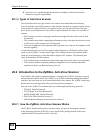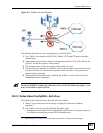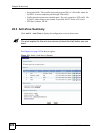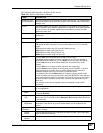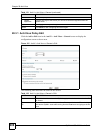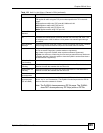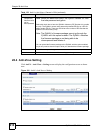
ZyWALL USG 1000 User’s Guide
403
CHAPTER 28
Anti-Virus
This chapter introduces and shows you how to configure the anti-virus scanner. See Section
5.4.14 on page 120 for related information on these screens.
28.1 Anti-Virus Overview
A computer virus is a small program designed to corrupt and/or alter the operation of other
legitimate programs. A worm is a self-replicating virus that resides in active memory and
duplicates itself. The effect of a virus attack varies from doing so little damage that you are
unaware your computer is infected to wiping out the entire contents of a hard drive to
rendering your computer inoperable.
28.1.1 Types of Computer Viruses
The following table describes some of the common computer viruses.
28.1.2 Computer Virus Infection and Prevention
The following describes a simple life cycle of a computer virus.
1 A computer gets a copy of a virus from a source such as the Internet, e-mail, file sharing
or any removable storage media. The virus is harmless until the execution of an infected
program.
2 The virus spreads to other files and programs on the computer.
3 The infected files are unintentionally sent to another computer thus starting the spread of
the virus.
Table 120 Common Computer Virus Types
TYPE DESCRIPTION
File Infector This is a small program that embeds itself in a legitimate program. A file infector is
able to copy and attach itself to other programs that are executed on an infected
computer.
Boot Sector Virus This type of virus infects the area of a hard drive that a computer reads and
executes during startup. The virus causes computer crashes and to some extend
renders the infected computer inoperable.
Macro Virus Macro viruses or Macros are small programs that are created to perform repetitive
actions. Macros run automatically when a file to which they are attached is
opened. Macros spread more rapidly than other types of viruses as data files are
often shared on a network.
E-mail Virus E-mail viruses are malicious programs that spread through e-mail.



